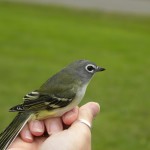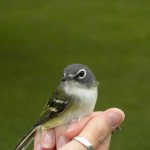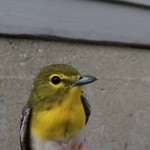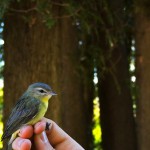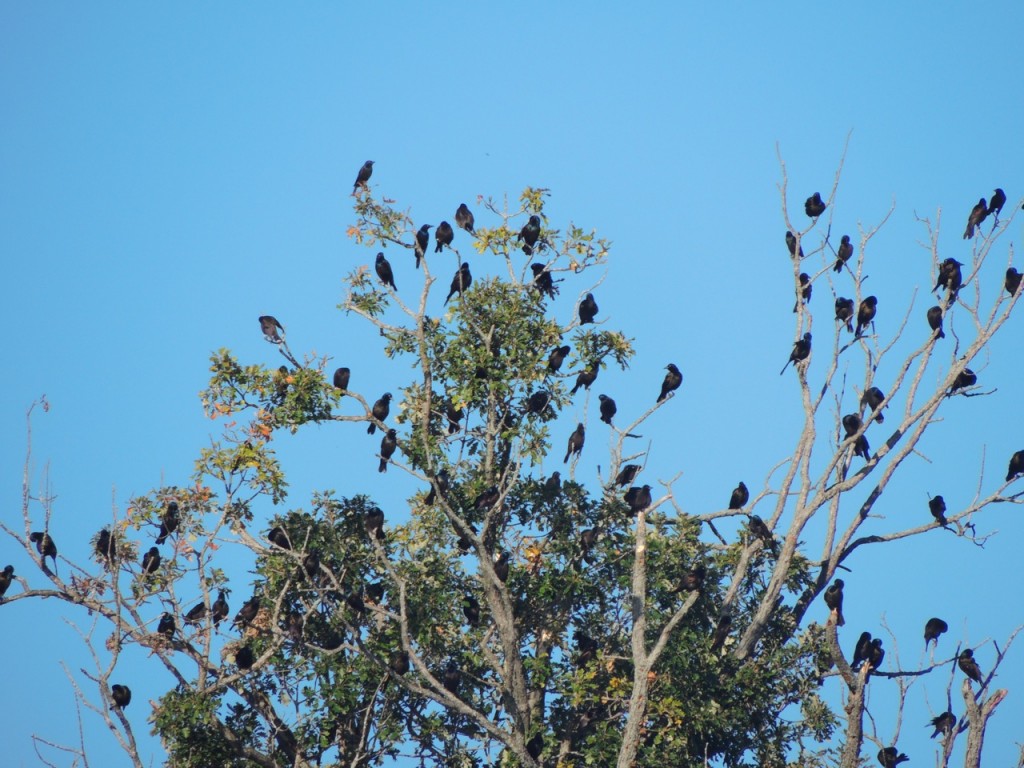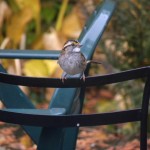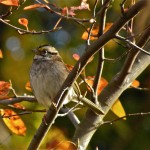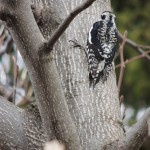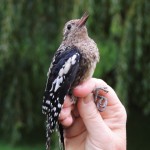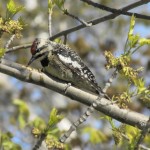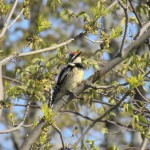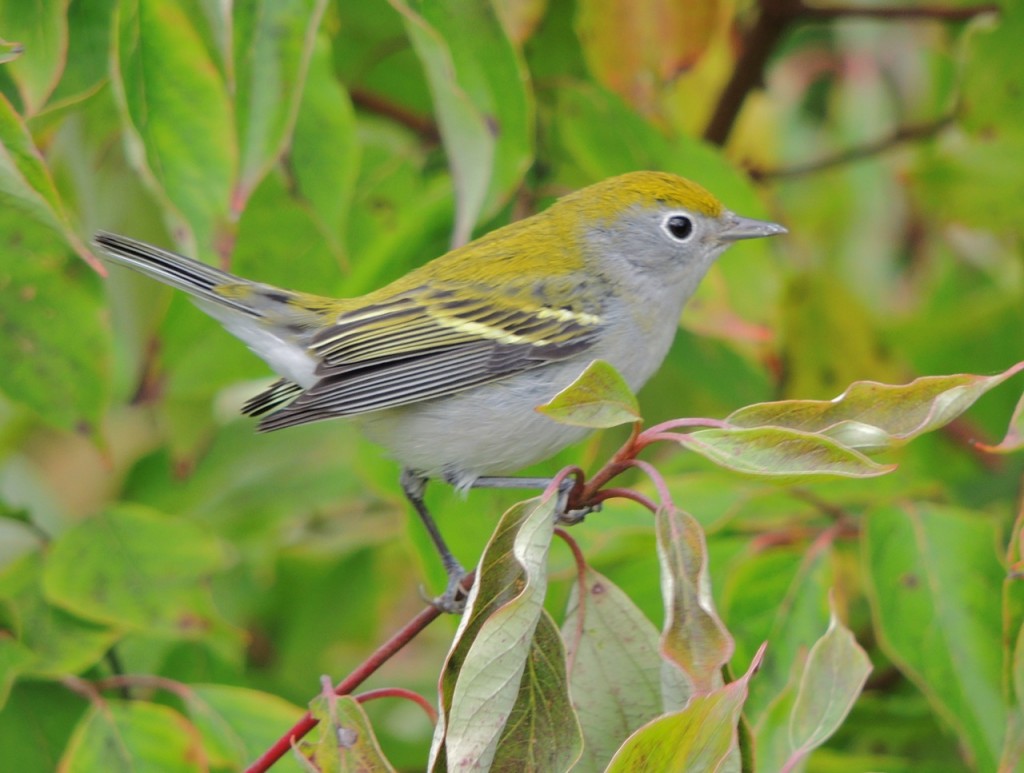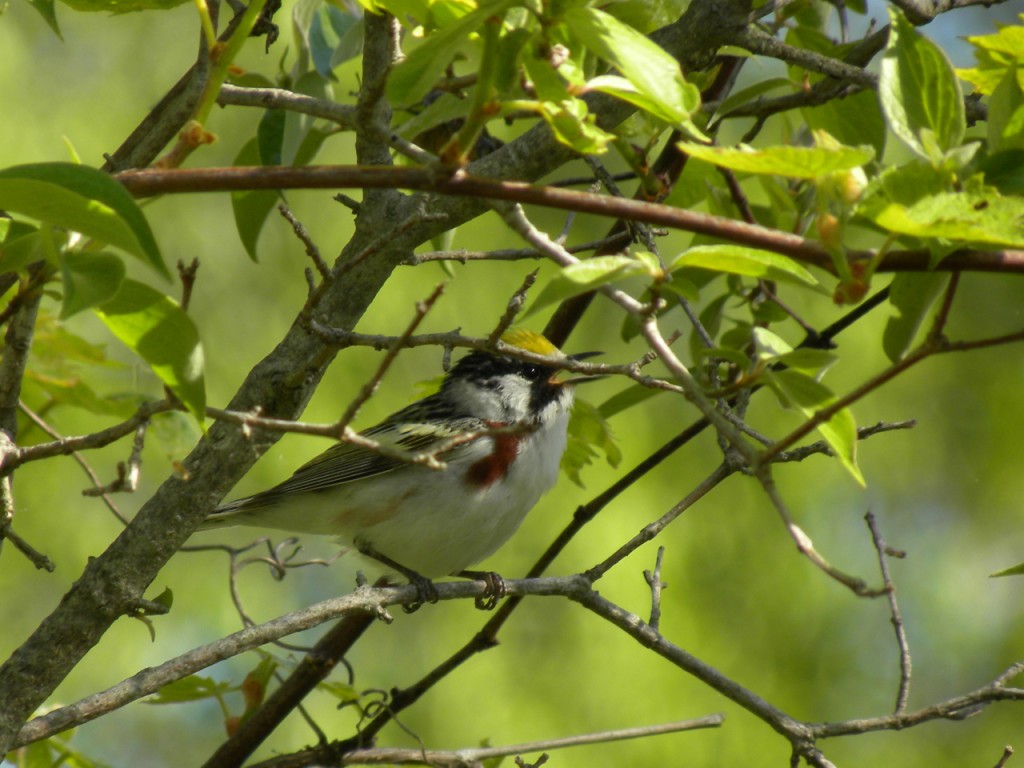28 September 2014. Burlington ON. I wonder when Indian Summer will become an inappropriate phrase. Can’t be long! As it is right now, my only concern about these glorious early fall days is the easy birding. It’s hard to beat T-shirt weather and a steady flow of interesting migrants.
This morning, I led a small group looking for birds in some interesting and varied habitat. We started out walking down into a wooded valley, spent some time watching over a large, cattail encircled pond and ended up strolling a creek-side trail. It was all very nice.
My Bird of the Day came early, it may in fact have been the very first bird seen, a Blue-headed Vireo. Those who follows my postings (is there anyone that compulsive?) will perhaps remember that I speak highly of vireos in general. We see five vireo species in Ontario, all of them summer visitors, only here to breed. Red-eyed, Warbling and Yellow-throated Vireos breed around here but not the Blue-headed or the Philadelphia Vireos, they both prefer the coniferous forests further north. I don’t ever recall enjoying lingering looks at a free-flying Blue-headed Vireo, they always seem to be on the move; today’s was like that. It first caught my attention when I heard its unfamiliar song, I was certainly puzzled, but with a bit of persistence tracing the song we found the bird and were allowed a couple of ‘now you see me now you don’t’ looks, enough to make an identification. Then it was gone. Most of our group missed it and it was probably only my excitement that was memorable. These photos shows how handsome Blue-headed Vireos are (at least I think so).
Also for your enjoyment, a couple of shots of other vireo species: A Yellow-throated and a Philadelphia. The spectacles on the yellow-throated making it look a little like the Blue-headed. Note the business-like tip of its beak.
The rest of our walk turned up several interesting birds: A single Sharp-shinned Hawk apparently consorting amiably with a small flock of Blue Jays; We heard but couldn’t find an Eastern Towhee and were amused by a deranged female Wood Duck which seems to have learned to beg food from passers-by. Perhaps its formative months were spent at a marina or urban park where the lines between humans and wildlife sometimes blur; I wonder how and where it will spend the winter and how dependant it is on hand-outs.
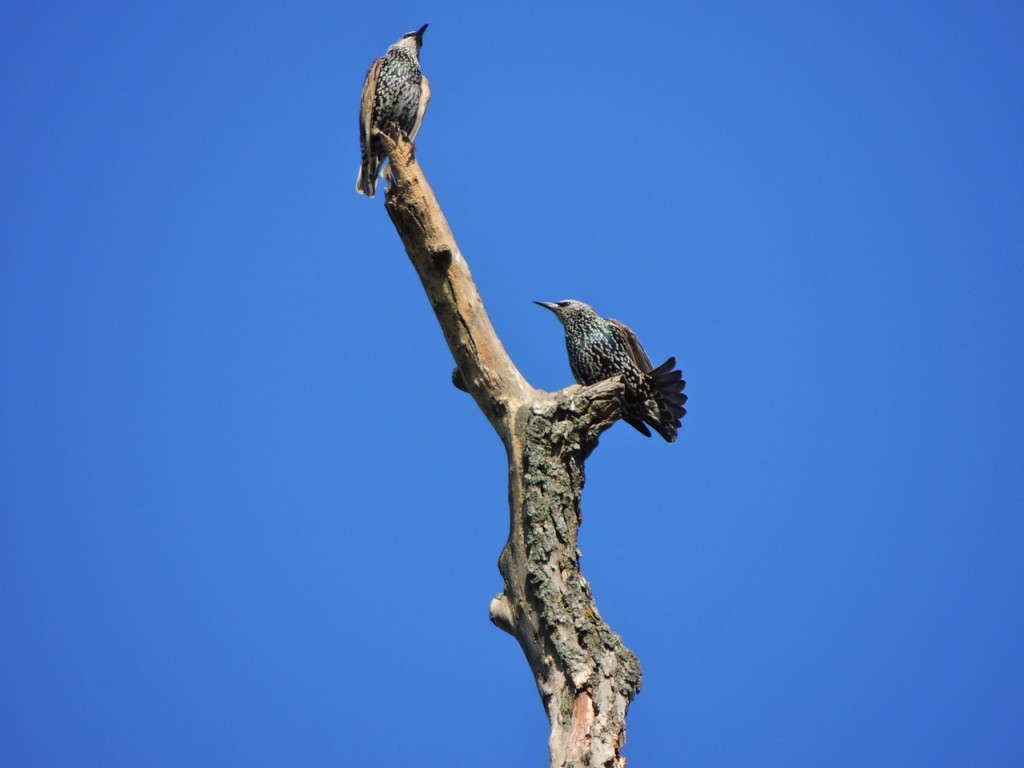
And finally, while it’s often hard to have much good to say about European Starlings, these two in their new feathers look quite fetching. The light tips of the feathers will wear off over winter; after which they’ll be just starlings again.
